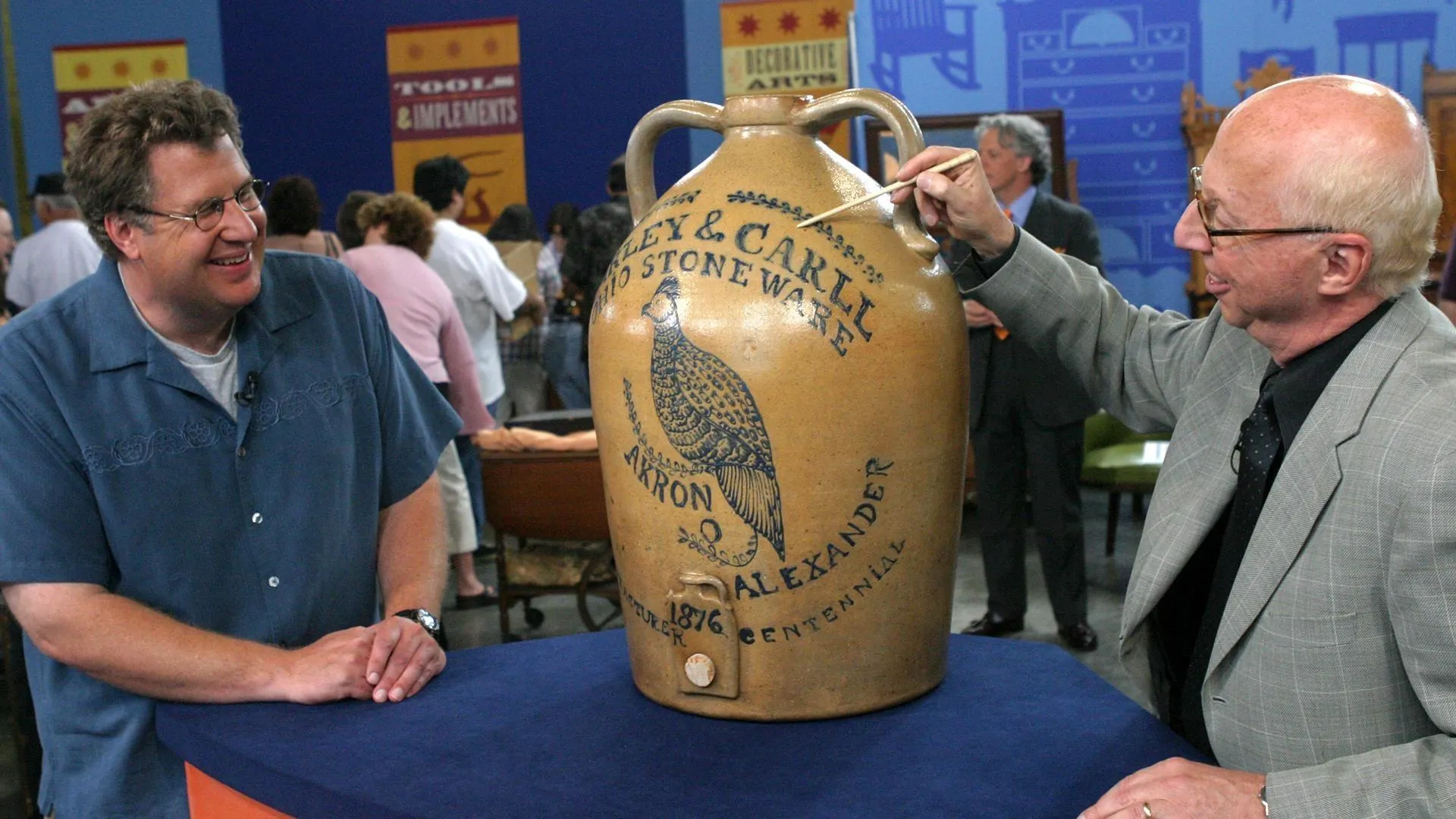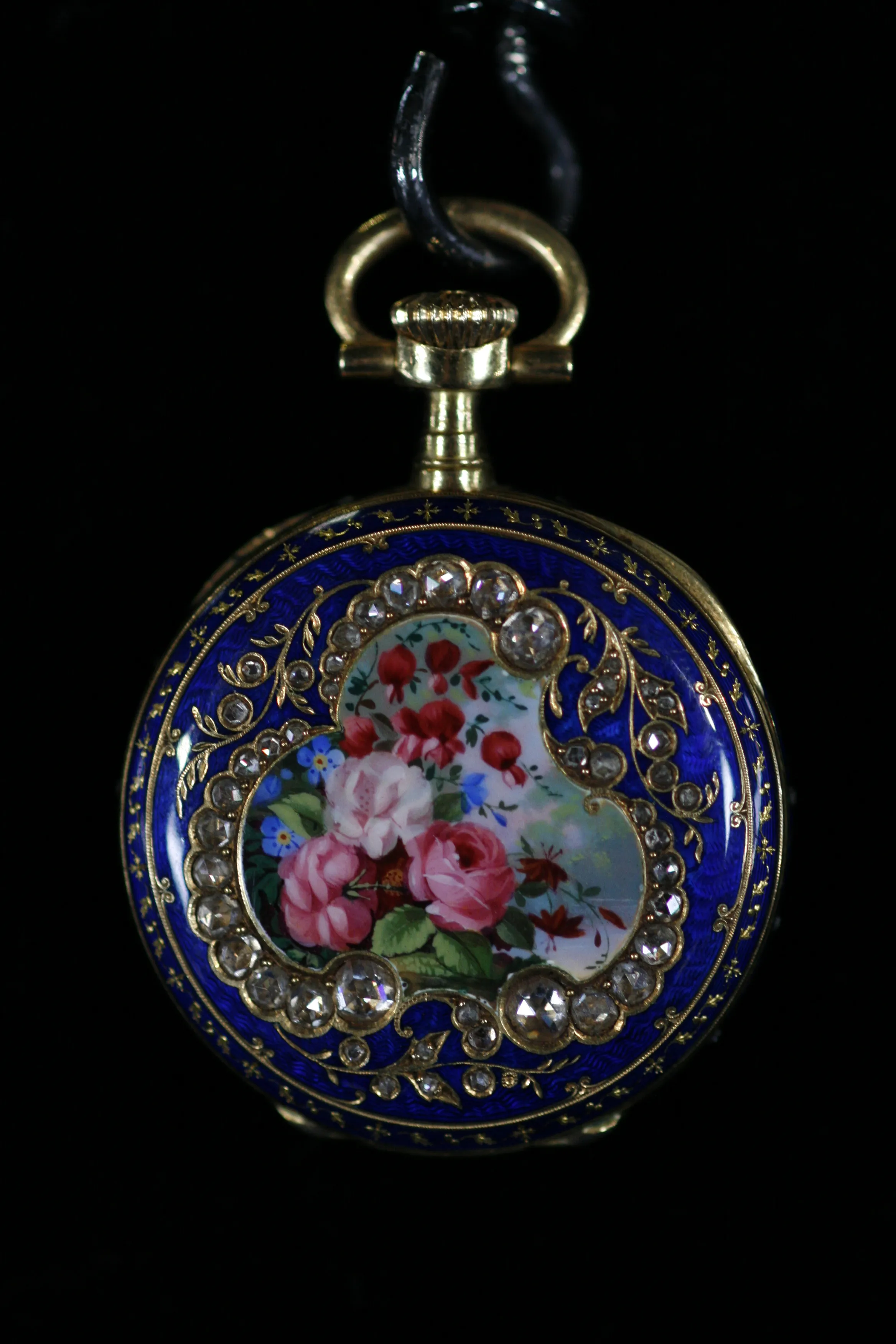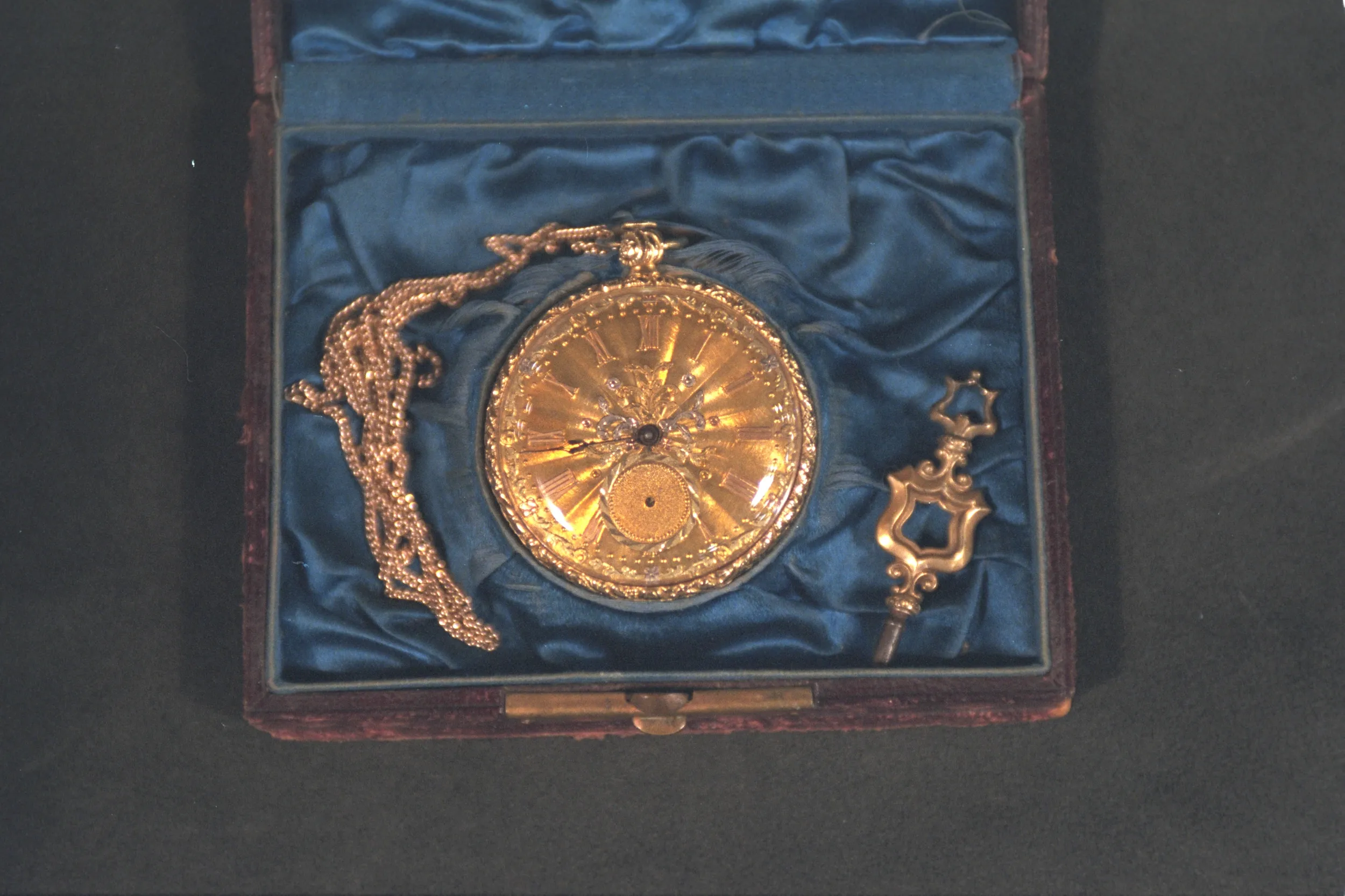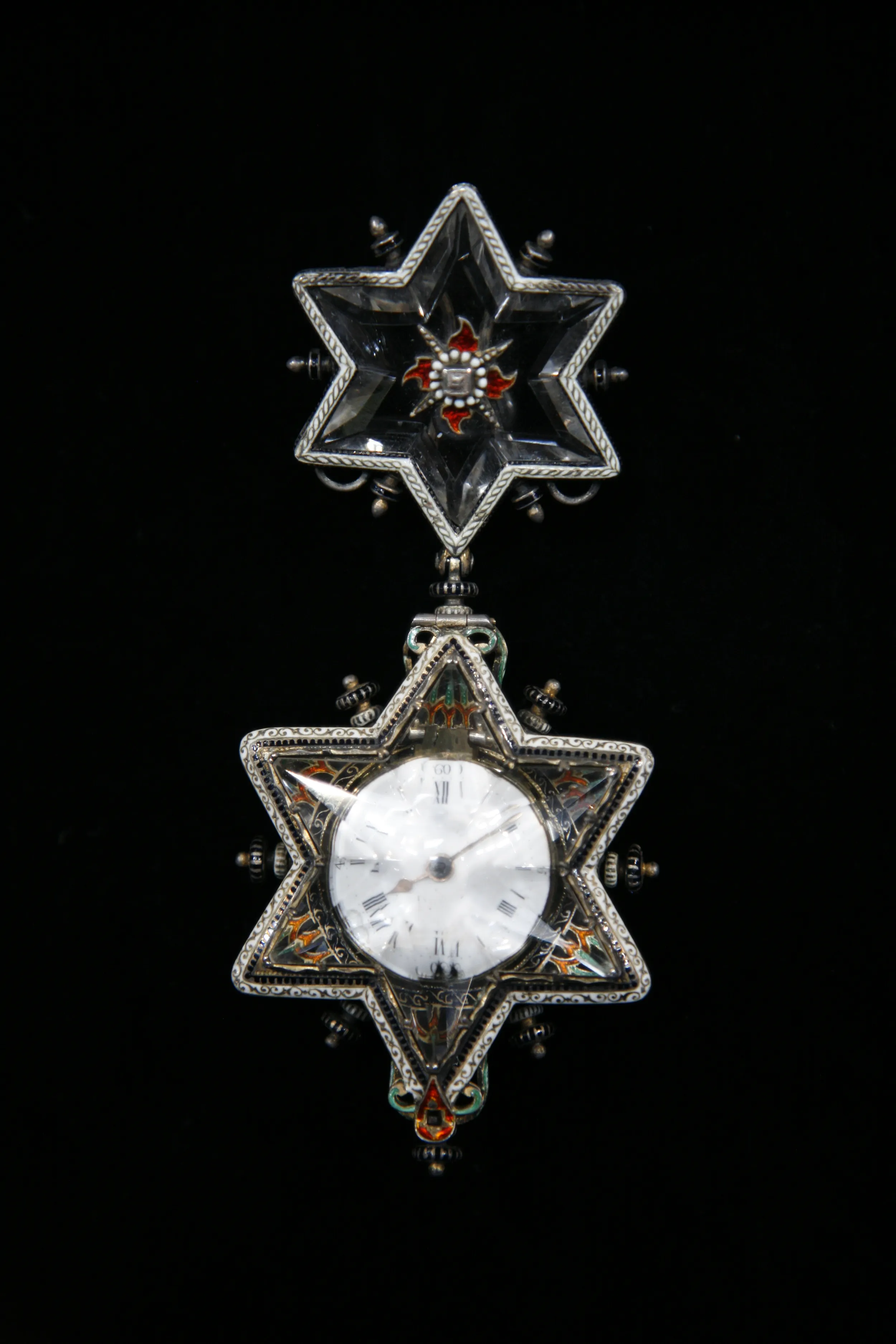GUEST: I bought it many years ago out of a house sale, and I was not into clocks at all. And the woman sort of pushed it at me. I saw the name on it, Simon Willard, and I thought, "Well, you know, that name rings a bell," being from Massachusetts. So I said, "Okay, I'll take it." It didn't take long for me to figure out it was a lighthouse clock, but I didn't know this style. I always remembered the mahogany ones. And originally, each side had wreaths and gold gilt and acorns, but they have sort of disintegrated through the years.
APPRAISER: Now, how long ago was it that you found it?
GUEST: Over 20 years ago.
APPRAISER: I also am from Massachusetts, and over the years have seen a small number of these clocks. The thing that's interesting about them and Simon Willard is that he invented this particular movement and this form, which is distinctively American.
GUEST: Yes.
APPRAISER: There's a relatively long period where these clocks were made-- 20 or 25 years. You will see these clocks in a variety of cases, and they vary in quality. One thing that's very evident is that the dome, as you know, is not original.
GUEST: Yes.
APPRAISER: The original dome would have been hand-blown, it would have a ring at the bottom, it would taper towards the top, and there would be a big knob handle. Instead of having to go like this, which we will do, you would have lifted the handle off. You had to take the top off to access this. This is how you wound the clock up.
GUEST: Ah.
APPRAISER: So a lot of the original glass domes, I daresay, almost all of them are long gone. We can talk a little about the brass bezel, this beautiful enamel dial. This clock is, boy, it's "as is," if there ever was one. The hands have been broken off. We look at this detail of the mechanism. Now, this movement is unique to Simon Willard. This had an alarm.
GUEST: Oh, really?
APPRAISER: So this would have run with two weights. When this alarm went off, this bell would be hit repeatedly, and it would be enough to wake everybody in the neighborhood, never mind in the house. And you can see this very distinctive suspension, what's left of it. Now, you've indicated to me, I think, that this is the way the clock came. It has, it has no pendulum.
GUEST: Yeah, I never got a pendulum.
APPRAISER: No rod and no weights. The thing that tantalizes me about it is that it has yet to be restored, so at least no mistakes have been made. If we remove this, you can see that the movement is mounted on this wrought-iron plate, and it's made like a barrel. This is made in section. You can see that there is canvas applied to the inside to keep it basically together.
GUEST: Mm-hmm.
APPRAISER: This painted surface is very darkened over the years, but it has Classical, Greek revival motifs-- the Greek key, and these wreaths with the oak leaves and acorns. Some of it is still there. Now, when we turn the clock this way, we can see that at some point, somebody cut a hole in the bottom, presumably so the weight would fall a little longer.
GUEST: Oh.
APPRAISER: And it would run a little longer, you wouldn't have to wind it so often. There's a limit as to how much advantage that made.
GUEST: I didn't realize that.
APPRAISER: And two of the feet have been replaced. The feet on the back, they've added these little wafers so that it wouldn't wobble too much. So here's a fantastic, rare timepiece, patented by Simon Willard in the early 19th century-- I would guess about 1820, 1825. It's not the best case they ever produced by far, but it's absolutely fascinating. Now, when you purchased this piece, what did you pay for it?
GUEST: Eight dollars. (chuckling)
APPRAISER: You sure this wasn't 200 years ago? (laughing) All right, eight dollars. It's just, that just...
GUEST: I didn't want it, so...
APPRAISER: Well, you got it. All right, at any rate, there's some precedent for these clocks bringing all kinds of money. I think this clock, taking into light there's some condition problems. Nonetheless, I think the clock is worth, well, probably somewhere between perhaps $75,000 and $100,000. And I'm so glad that somebody finally convinced you to buy it.












